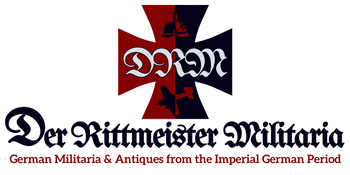Reuss Elder Line (Fürstentum Reuß ältere Linie)
CLICK HERE FOR ALL PROUDCTS RELATED TO REUSS
Basic Information
- Official Name: Principality of Reuss Elder Line (Fürstentum Reuß ältere Linie)
- Capital: Gera
- Motto: "Ich baue auf Gott" (I build on God)
- Established: 1778 as a principality (earlier as a county within the Holy Roman Empire)
- Dissolution: Transitioned to the Free State of Reuss in 1918 following the abdication of Prince Heinrich XXIV.
-
Key Symbols:
- Coat of Arms: Features a gold lion on a black field, surrounded by decorative scrolls.
- Flag: Black, red, and yellow horizontal stripes.
Geographical Overview
-
Location:
Situated in central Germany, bordered by Saxe-Weimar-Eisenach, Saxe-Altenburg, and other small Thuringian states. -
Size:
A very small principality with mostly rural areas, hilly terrain, and modest urban centers like Gera. -
Land Features:
- Thuringian Highlands: A region of wooded hills and scenic valleys.
- Weiße Elster River: Supported agriculture and modest trade in the region.
Historical Timeline
-
Early Reuss Elder Line:
- 12th Century: Established under the House of Reuss, which divided into Elder and Younger Lines in the 16th century.
- 17th–18th Century: Maintained as a county under the Holy Roman Empire, later elevated to a principality in 1778.
-
Principality Era (1778–1918):
- Governed by the Elder Line of the House of Reuss, all male rulers were named Heinrich, following a family tradition.
- 1871: Integrated into the German Empire while retaining autonomy in local governance.
-
Decline (1918):
- The abdication of Prince Heinrich XXIV during the German Revolution marked the end of the principality, merging with Reuss Younger Line into a unified Free State of Reuss.
Notable Rulers and Leaders
- Heinrich XI (1723–1800): Elevated the county to a principality in 1778.
- Heinrich XXIV (1902–1918): The last prince, who abdicated during the German Revolution.
Military and Political Strength
-
Military Contributions:
- Contributed a small contingent to the Imperial German Army, primarily light infantry.
- Regiments often operated in conjunction with those of neighboring states.
-
Political Role:
- Governed as a constitutional monarchy with representation in the Bundesrat.
- Played a minor but stable role in German unification efforts under Prussian leadership.
Cultural Contributions
-
Architecture:
- Osterstein Castle: A Renaissance palace in Gera, serving as the residence of the princely family.
- Gera City Hall: An architectural landmark showcasing Renaissance and Baroque influences.
-
Arts and Literature:
- The principality supported regional artists and musicians, fostering a modest cultural scene.
- Folk traditions, including storytelling and music, were preserved in rural communities.
-
Education and Science:
- Promoted forestry and agricultural education, reflecting its rural economy.
- Sponsored modest advancements in public schooling and local governance.
-
Cuisine:
- Known for hearty dishes like Thuringian dumplings and simple stews.
- Geraer Quarkkuchen (quark cheesecake) was a local favorite.
Fall of Reuss Elder Line
-
World War I (1914–1918):
- Economic strain and food shortages affected the small principality significantly.
-
German Revolution (1918):
- Prince Heinrich XXIV abdicated, and the Elder and Younger Lines merged into the Free State of Reuss.
-
Post-WWII (1945):
- Incorporated into Thuringia under East German administration and later into modern Thuringia after reunification.
Connections to Products
-
Cultural Artifacts:
- Replicas of Osterstein Castle and other architectural landmarks.
- Folk art and traditional crafts from the Reuss region.
-
Military Memorabilia:
- Medals, badges, and uniforms from Reuss regiments in the Imperial German Army.
- Maps and records showcasing Reuss’s military alliances.
-
Historical Documents:
- Royal correspondence and treaties from the House of Reuss Elder Line.
- Administrative documents reflecting the principality’s governance.
-
Tourism and Culinary Items:
- Guidebooks and postcards featuring Gera and Osterstein Castle.
- Recipe books and tools for preparing regional dishes like Thuringian dumplings and quark cheesecake.
-
Educational Contributions:
- Publications and artifacts related to forestry and agricultural education in Reuss.
- Historical records from local schools and cultural initiatives.







